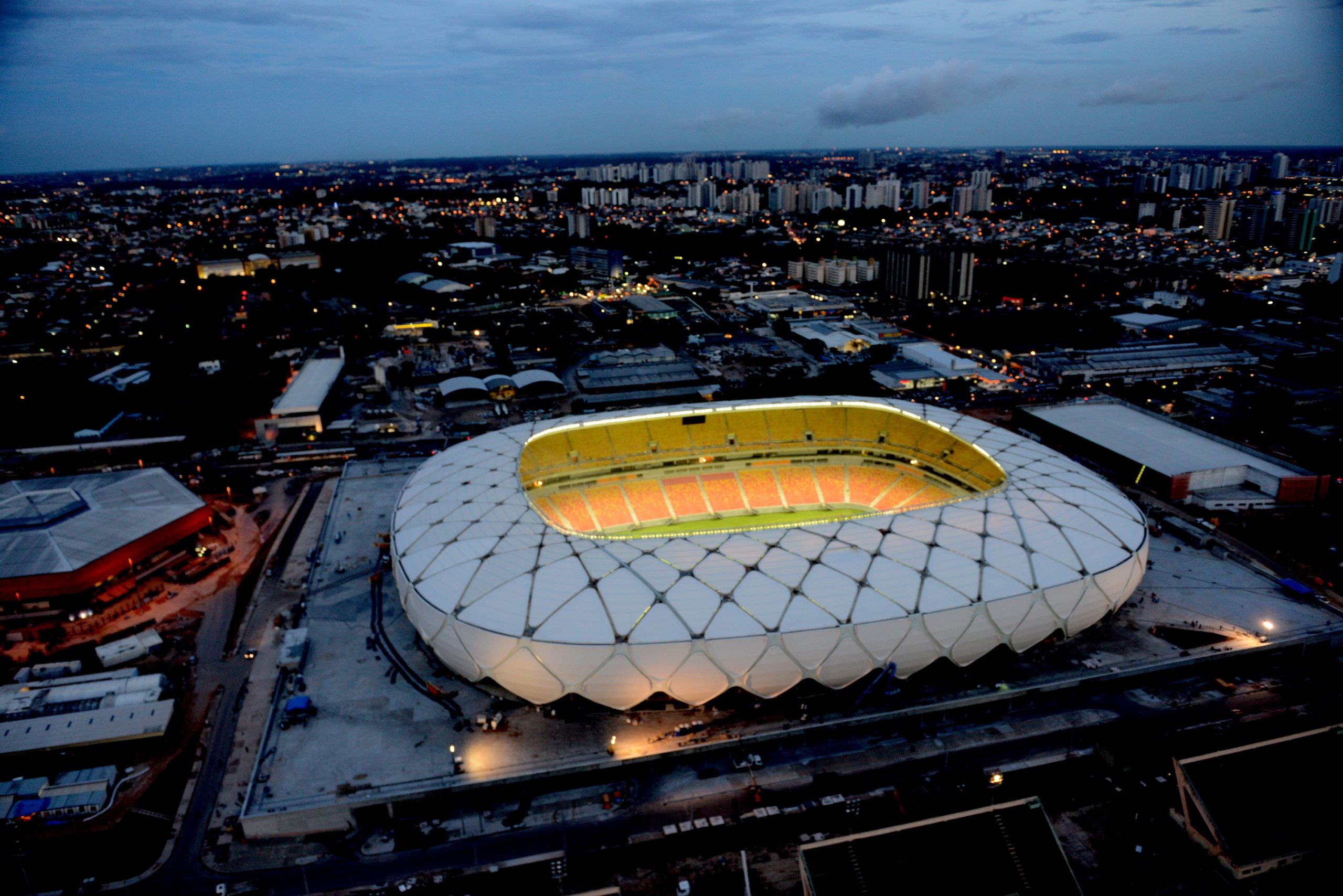Football is the world’s most popular and inclusive sport with passionate, dedicated fans spanning every section of the globe. It’s fitting that so many impressive stadiums — each with their own unique features and identities — are host to the beautiful game.
While the excitement of watching football can be enhanced by placing bets, there’s no greater way to experience the game than being up close to the action, with both the atmosphere and surrounding architecture adding to the magic.
Here’s the world’s most unique and spectacular football stadiums — where football fans are certain to have an unforgettable visit.
Article Contents
Arena da Amazônia (Manaus, Brazil)

Amazonia was built on the site of the former Vivaldão Stadium specifically for the 2014 World Cup. The stadium’s design was partly inspired by the anacondas that live in the Amazon jungle; the combined façade and roof of the arena resemble the skin of these snakes.
Another important factor that played a role in the design was ecology. Amazonia’s energy supply is partly provided by solar panels on the roof.
The capacity of the arena is 44,351.
Arena das Dunas (Natal, Brazil)

Arena das Dunas was built for the 2014 World Cup.
The exterior of the stadium looks like a giant flower. According to the Populous architects, the bowl of the Arena das Dunas comprises of 20 petals, ready to open at any moment. The design is especially eye-catching in the evening when the panels are illuminated.
The stadium stands are made of collapsible metal structures, so the capacity of the arena can vary from 45 to 32 thousand spectators, depending on the status of the football tournament or event held.
Incheon Munhak (Incheon, South Korea)

Incheon Munhak, built especially for the 2002 World Cup, has a capacity of nearly 50,000 spectators.
Its signature feature is undoubtedly its unusual roof, the membrane of which is made of fiberglass. Its shape is reminiscent of ship sails and masts, emphasizing the maritime history of Incheon. In 2014, the stadium hosted the Asian Summer Games.
Camp Nou (Barcelona, Spain)

Barcelona’s home is the largest stadium in Europe in terms of capacity and has UEFA’s highest rating.
In 1957, when it hosted its first match, it had a capacity of 90,000 spectators. For the 1982 World Cup, the number of seats was increased to 120,000. However, a restructuring took place in the late 1990’s, when UEFA demanded that all stands be equipped with seats. To keep as many seats as possible, the contractors dug down to lower the field by several meters. Today it holds a seating capacity of 99,354.
The arena received its current name ‘Camp Nou’ in 2001. Visitors can enjoy an on-site museum — which is the most popular in Catalonia — devoted to the history of FC Barcelona.
Maracanã (Rio de Janeiro, Brazil)

The stadium was named after a small river flowing nearby.
Built for the 1950 World Cup, Maracanã has long been the largest arena in South America. It famously hosted 200,000 fans who came to watch one of the most dramatic games of Brazil’s history — the the decisive match of the final group stage of the World Cup. Uruguay won the match 2-1, which marked the last World Cup final featuring two South American teams.
Subsequently, the stadium has undergone several renovations, the last of which ended in 2014. Now Maracanã has a capacity of 78,838 spectators.
Marina Bay (Singapore, Singapore)

In Singapore, on the shores of Marina Bay, one of the most unusual stadiums in the world hosts football matches and other events.
The football pitch itself is located in the water, on a floating platform made of steel, and the stands themselves, with a capacity of 30,000 spectators, are built on the shore next to it. The reason for such an unusual solution was simply the lack of land. The result is the world’s largest on-water sports field and stage.
The platform consists of 15 floating parts connected by unique fasteners, and the entire structure is held by six pylons anchored to the seabed. Thanks to this, the platform supports a weight of 1,070 tons.
Yet another unusual feature of Marina Bay is the section of a Formula 1 circuit that runs between the grandstands and the stadium!
Tottenham Hotspur (London, England)

The Tottenham Hotspur Stadium is arguably the world’s most advanced football stadium at this moment in time.
Its exterior is decorated with 35,000 decorative tiles. Exactly 4,801 perforated metal panels comprise the stadium’s veil, while the rest is made up of 2,505 glass panels. It illuminates at night, with the functionality to alter the colours.
The south stand of the stadium boasts 17,500 seats — making it the largest single-tier stand in the UK. At the same end, two giant TV’s each measure 325sq m: the largest stadium screens in western Europe. To top it off, inside the stand is a 65m-long Goal Line Line Bar — the longest in the country — which runs parallel with the pitch.
Aside from it’s in-house microbrewery, the most unique feature about the Tottenham Hotspur stadium is its retractable pitch. This highly impressive feature enables the football pitch to slide out and be swapped with an NFL playing surface in just 25 minutes, fully prepared to host an entirely different sport!
Other impressive stadiums include:
- San Siro (Milan, Italy),
- Signal Iduna Park (Dortmund, Germany) ,
- Allianz Arena (Munich, Germany),
- Anfield (Liverpool, England),
- Old Trafford (Manchester, England) and
- Wembley (London, England).
Also see: the world’s most intimidating football stadiums
- BookieLink Review|Access Bookmakers & Exchanges [2025] - July 14, 2025
- Mobile Sports Betting in 2025: Trends, Tools & What’s Next - July 14, 2025
- Bet365 Review | The Industry’s Leading Bookmaker Analysed [2025] - July 13, 2025



